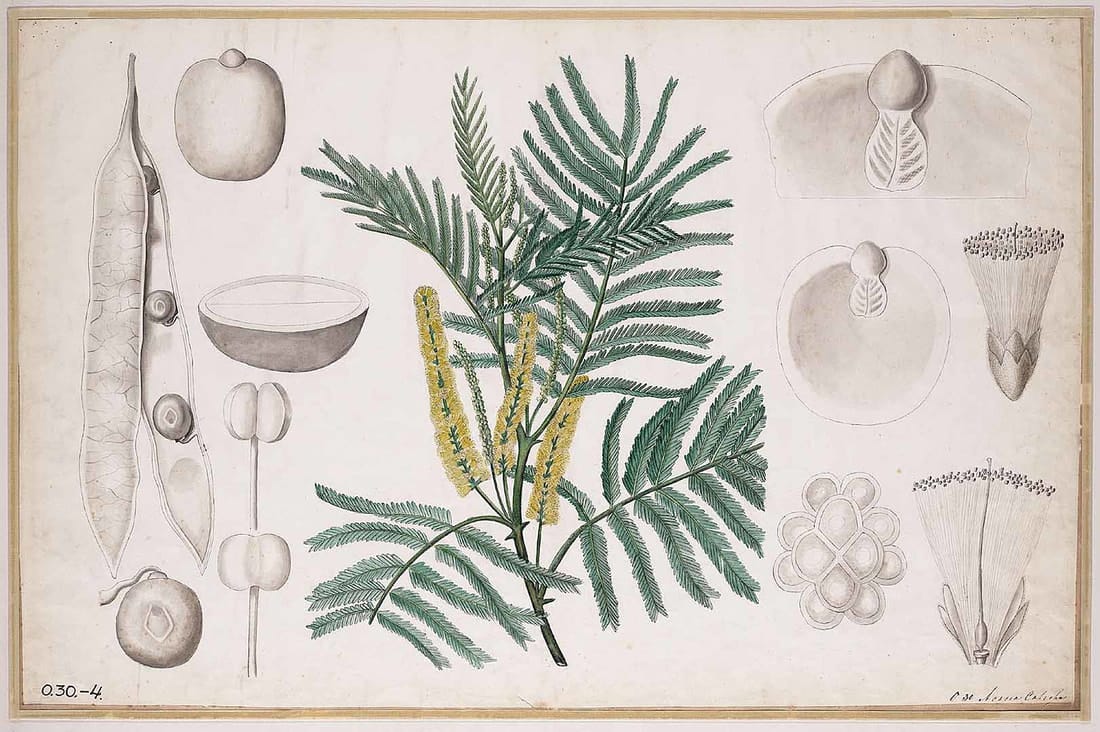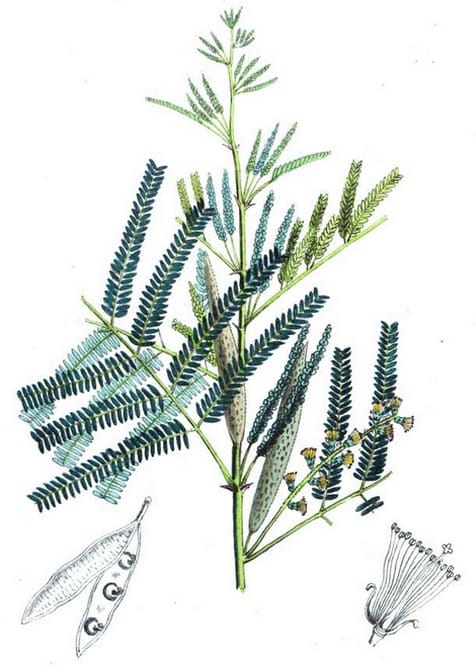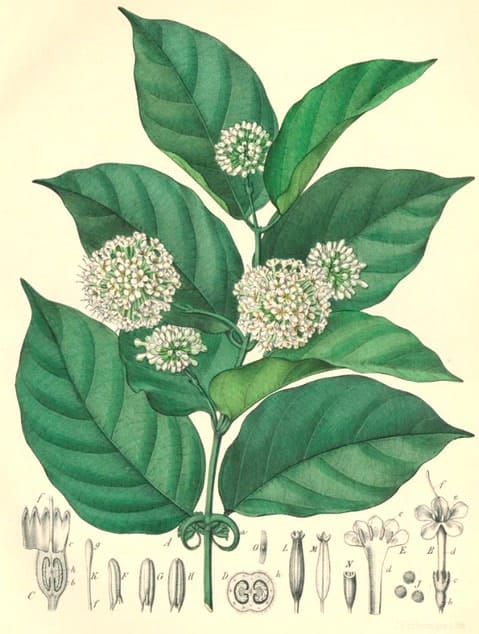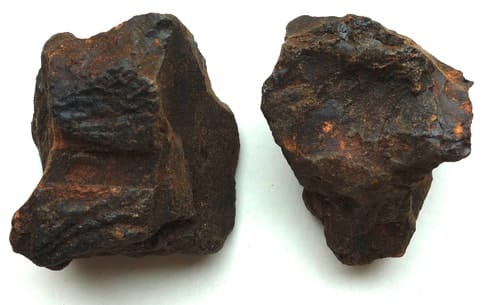Catechu, Er Cha 儿茶
Er Cha (TCM)Khi la wa ri (Tibetan)
Khadira (Ayurveda)
 Acacia catechu
Acacia catechuBotanische wandplaten, 1904–1914
 Acacia catechu
Acacia catechuAn Encyclopaedia of useful and ornamental Plants, Burnett, 1852
 Uncaria Gambir (used as an alternate source in TCM)
Uncaria Gambir (used as an alternate source in TCM)Atlas der Officinellen Pflanzen, Berg & Schmidt, Leipzig, 1893
 Catechu (Adam, 2016)
Catechu (Adam, 2016)Botanical name:
Acacia catechu (Black Catechu)
TCM uses Uncaria gambir synonymously with A. catechu
Parts used:
Gum; concentrated extract
See also Acacia wood, Seng ldeng
Temperature & Taste:
Cool, dry. Bitter, astringent
Classifications:
2P. HEMOSTATICS
3Q. ANTHELMINTIC
TCM:
T. External Medicines
Uses:
1. Dries Damp, Stops Leakages:
-Diarrhea and Dysentery, with or without Blood
-Leukorrhea, Spermatorrhea
2. Stops Bleeding:
-bleeding of the Lungs, Stomach, Bowels
-Uterine Bleeding
3. Resists Poison:
-in formula for Intermittent Fever
-obstinate and chronic Skin diseases (Ayurveda)
4. Clears Phlegm, Clears the Lungs:
-Cough from Lung heat
5. Externally:
-applied to damp, oozing non-healing Sores and Ulcers to dry them
-Toothache, applied to the gum or used to fill a hollow tooth
-powder or paste strengthens the gums, stops bleeding and firms the teeth
-applied to Mouth Sores and Ulcers
-topically to Genital lesions and Syphilitic Sores
-concentrated decoction as a wash for Thrush
-as a wash for cracked or chapped Nipples
Dose:
In Pills or Powders: 1–3 grams
Substitutes
Uncaria gambir gum is used synonymously in TCM.
Main Combinations:
1. Bleeding:
i. Catechu with Red Sandalwood
ii. Catechu with Dragons Blood, Red Earth
2. Internal Bleeding, Bruising, Trauma:
i. Tormentil (½ oz.), Rose, St. Johns wort (2 drams each), Red Sandalwood, Mummy (Mumiya), Dragons Blood (1 oz. each), Catechu, Myrrh (½ oz. each), Nutmeg (1 dram), Alcohol (20 oz.). Digest, filter. (Pharmacopoeia Generalis, 1783)
ii. Catechu with Dragons Blood, Frankincense, Myrrh, Safflower, Cinnabar, Musk, Borneol Camphor (as in Qi Li San)
3. Gastrointestinal Bleeding, Catechu with Notoginseng San Qi (TCM)
4. Enuresis, Catechu with Oak bark, Camomile, Uva Ursi, Agrimony, Tormentil, St. Johns wort (Peyer)
5. Diarrhea:
i. Catechu, Bistort
ii. Catechu with Cinnamon, Opium (Unani)
6. Dysentery, Catechu, with Bistort, Angelica, Calamus, Tormentil, Zedoary, Pomegranate bark, Rose, Saffron, Myrrh, Rhubarb (as in Anti-Dysenteric Pills)
7. Intermittent Fever, Cinchona, Wormwood, Catechu, Lesser Centaury (Formulaire Magistral et Memorial Pharmaceutique, 1823)
8. Non-healing sores and ulcers:
i. Catechu is applied with Aloe, Myrrh
ii. Catechu is applied with Myrrh, Frankincense and Dragons Blood
iii. Chronic Ulcers with foetid discharge, Catechu in ointment with a little Copper Sulphate
9. Leukorrhea from Damp-Heat with Phellodendron Huang Bai, Sophora Ku Shen, Alum (Bai Fan), Borneo Camphor (Bing Pian) as a vaginal suppository (as in Xiao Mi Shuan of the Chinese Pharmacopoeia)
10. Mouth and Throat Sores and Ulcers, Catechu with Indigo and Camphor, topically (TCM)
11. Syphilitic Sores, Catechu with Rice wash water and Picrorhiza (TCM)
12. Toothache, Catechu with Cinnamon and Nutmeg topically (Unani)
13. Hoarseness, Loss of Voice, Catechu with Cinnamon, Nutmeg as pills to be sucked.
14. Bed Sores, as an ointment Catechu with a little Copper Sulphate.
Major Formulas:
Qi Li San (TCM)
Rhubarb 8 Ointment (Zab lag brgyad pa) (Tibetan)
Cautions:
None noted. It is very dry, so should be used cautiously in Yin deficiency.
